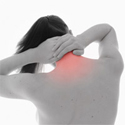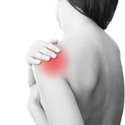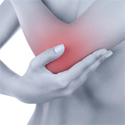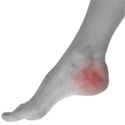Find Out More About the Muscles Affected by Golf
Golfers strain every muscle from their neck to their feet, so let’s talk about each area separately. It’s important to note that when a muscle gets tight you can’t move in the opposite direction.
The muscles of your neck expand down to your upper back and shoulders, so tension in these muscles will not only cause neck pain and headaches, but will also prevent you from moving your head easily – an important movement so you can watch your ball fly down the fairway.
Your shoulder is the most complicated joint in the body because it has more muscles than any other joint in your body. Each individual muscle is pulling your shoulder and upper arm so you can move in a full circle: up to the ceiling, down to the ground, all the way back, all the way forward, and any number of slight variations in between.
As you swing your club while golfing, the muscles of your arms are not only repetitively strained, but if you hit the ground and make a divot in the grass, you are also sending shock waves through your golf club, and up through the muscles of your arms. It won’t hurt you if it is occasionally, although if you hit the rubber mat at the driving range, it will cause more problems for your arms.Your golf pro has shown you the proper way to hold your wrists while you are playing, and this is very important so you don’t strain the muscles that cross over your wrists, including the muscles that will cause carpal tunnel syndrome.
As you follow through with your shot you will be putting a strain on your knee joint. This repetitive motion can eventually cause the muscles that pull your body in this direction to shorten and pull on your knee joint. Most people will rub their knee, wear a knee brace, or get therapy on the knee joint, but the strain is actually coming from the upper leg muscles pulling on the joint.Your knee joint is actually the insertion point of the muscles of the thigh, and also two of the muscles explained in the Hip Pain section above – the Gluteus Maximus and Tensor Fascia Lata.
If you are playing golf properly you shouldn’t have much pain in your ankle, as all ankle pain, and most foot pain, comes from the muscles of your lower leg.





